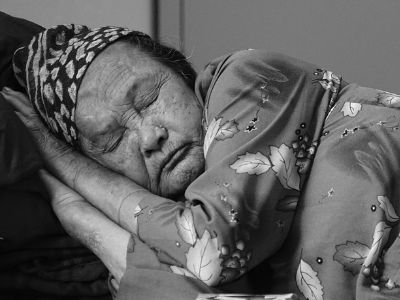5 Stages of Parkinson’s Disease

Parkinson’s disease affects people in various ways, and those who live with the condition may not experience all of the typical symptoms. Those who share similar or identical symptoms may not necessarily have them simultaneously or experience the same intensity. It’s a disease that progresses uniquely from person to person, and the uncertainty of what might happen next can be very difficult for patients and their loved ones.
What Is Parkinson’s Disease?

Parkinson’s disease is caused by a loss of nerve cells in a part of the brain called the substantia nigra, leading to progressive damage to several areas of the brain over many years. The loss of nerves reduces dopamine in the brain, which plays a vital role in the body’s ability to move. This reduction of dopamine is responsible for several Parkinson’s symptoms, mainly motor symptoms, but the mechanism for losing nerve cells remains unclear. Most experts agree that it’s due to genetic and environmental factors.
The three typical movement symptoms of Parkinson’s disease are:
- Involuntary shaking or a ‘tremor’ of parts of the body
- Slow movement
- Stiff muscles and difficulties with flexibility
Additionally, people with Parkinson’s disease can also experience other physical and non-movement symptoms, such as:
- Depression and anxiety
- Balance issues
- Losing sense of smell
- Sleeping problems
- Memory difficulties
Many medical professionals who diagnose Parkinson’s disease use the Hoehn and Yahr scale to classify symptoms and their severity. This scale rates the condition and breaks it into five stages based on disease progression. The scale allows doctors to evaluate how far PD has advanced in patients and what treatments may be most effective for symptom management.
Stage 1
Changes in a Person’s Habits
At stage 1, there can be mild symptoms of Parkinson’s disease, but they’re often not severe enough at this point to impact daily tasks and general quality of life. However, this isn’t to say symptoms are not present. Family and friends may notice changes in a person’s movement, recognize poor posture, and see differences in facial expressions at this early stage.
Stage 2
Muscle Stiffness and Posture Problems
Stage 2 of Parkinson’s disease is considered a ‘moderate’ condition, with symptoms becoming more noticeable than in the previous stage. Examples include noticeable tremors, stiffness, and trembling. Also, changes to facial expressions can occur but are not always apparent to others.
Although stage 2 doesn’t usually cause balance-related issues, other movement symptoms, such as muscle stiffness, can make tasks more challenging. Additionally, the condition can hinder a person’s posture at this stage, leading to back and neck pain. At this point, the disease can impact both sides of the body, and difficulties with speech can also occur.
Progression from stage 1 to 2 can take months to years, and there are no reliable methods to predict how it will progress. People in stage 2 of Parkinson’s can generally live alone but tend to find everyday tasks more difficult.
Stage 3
Poor Reflexes and Balance Issues
The third stage of Parkinson’s is considered mid-stage Parkinson’s progression and a significant turning point in how the disease will progress from here on out. While many of the symptoms remain the same or similar to stage 2, stage 3 can also introduce poorer reflexes and loss of balance at times. For this reason, people in stage three experience more noticeable movement issues or appear to ‘slow down.’ Unfortunately, falls become more frequent at this stage due to balance and reflex problems.
Stage 4
Poor Motor Skills

The critical factor in separating people with stage 3 Parkinson’s and stage 4 is independence. Motor skills are heavily impacted at stage 4, and movement symptoms affect a person’s ability to retain their independence. Some people at stage 4 can stand confidently without assistance, and some can walk without the help of equipment or another person, but it’s common for a person to require assistive equipment such as a walker.
Stage 5
Severe Stiffness
Stage 5 of Parkinson’s disease is the final and most debilitating stage and reflects the most advanced progression. Severe stiffness can make it difficult, if not impossible, for a person to stand or walk. It is due to stiffness causing the legs to freeze when the patient attempts to stand essentially. These symptoms make daily tasks impossible and dangerous for someone to try without assistance. Therefore, it’s common for stage 5 sufferers to need a wheelchair because of an inability to stand without help — meaning they often require supervision to avoid falls.
Recommended medications for this type of disease may include:
These drugs are in a class of medications called dopamine agonists. It works by acting in place of dopamine, a natural substance in the brain needed to control movement.



